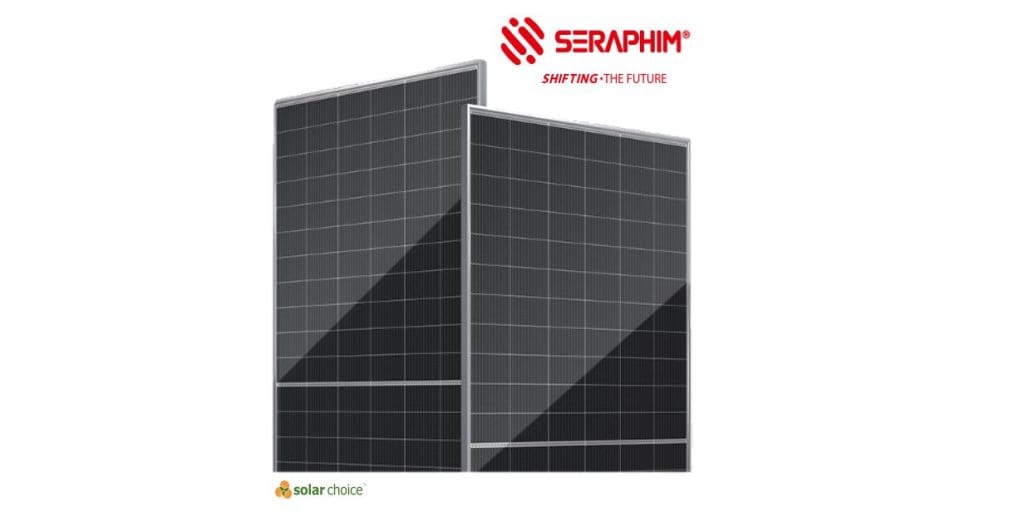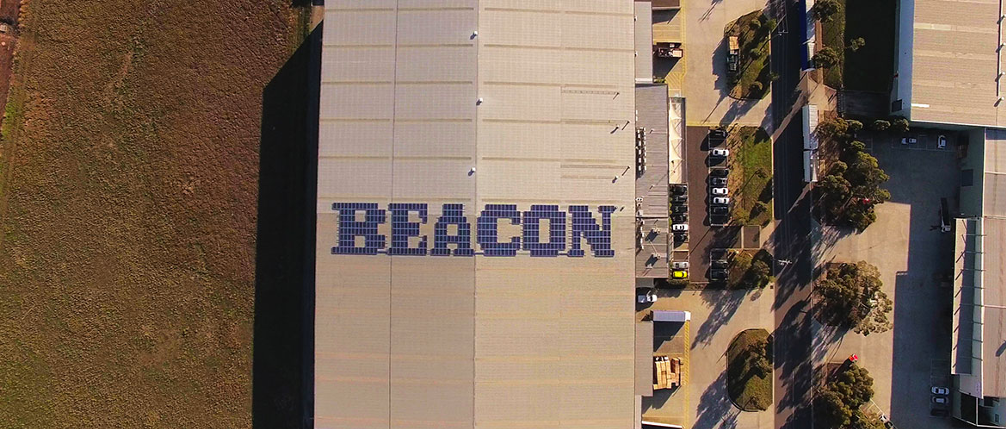Overview of Seraphim – Company History
Key Panel Indicators
What is a Bloomberg Tier 1 Solar Panel?
What is PV Evolution Labs Top Performer?
Why Is Office Location in Australia Important?
Compare quotes from up to 7 installers in your area now.
How Much Do Seraphim Solar Panels Cost?
- Full turnkey Solar System with Seraphim Solar Panels
- Installation from a pre-vetted reputable installer from Solar Choice’s network
- The STC rebate and GST
Compare quotes from up to 7 installers in your area now.
Seraphim Solar Panels – Points of Difference
Independent quality testing
Seraphim solar panels have been awarded certifications through most independent testing authorities including PV Evolution Labs and Bloomberg Tier 1, and their panels have been trusted by large investment firms on many large-scale solar farm projects.
The annual capacity of Seraphim has reached up to 7.75GW in 2021 which makes them one of the larger solar panel manufacturers by size of production.
Seraphim Solar Panel Technologies
Seraphim Solar currently has 132 solar panels approved by the Clean Energy Council in Australia under the name “Seraphim Solar System Co Ltd”. This is a requirement to be eligible for the federal STC solar rebate.
Seraphim has four main series of solar panels: S2, S3, S4 and S5 series which have a variety of different options to suit residential, commercial and utility-scale projects.
S2 Series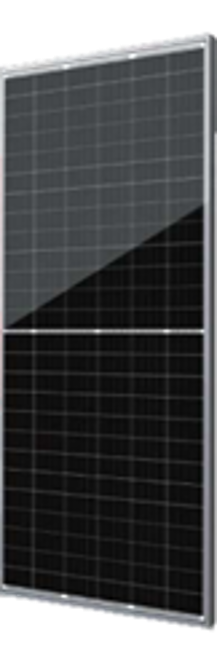
The S2 Series features bifacial and mono facial panels originally launched in 2019 and featuring their ‘Blade’ panel. The panels used 156 half-cut monocrystalline cell technology which is now commonly adopted across the solar panel industry to improve yield and resilience to shading. The power range for this series is from 320Wp to 455Wp, with an up to 20.83% efficiency.
S3 Series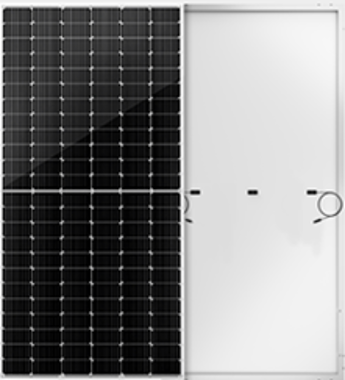
The later S3 Series also features mono facial and bifacial panels with efficiencies of up to 20.07% (SRP-375-BMB-HV). The S3 series also features a multi-busbar and slightly larger 166 mm silicon wafers which help increase the total output of the panel. As a result the S3 panel dimension (2094x1038x35mm) are larger than the S2 series.
The S3 series also offers dual glass panels with a lower degradation rate (0.45% per year).
S4 Series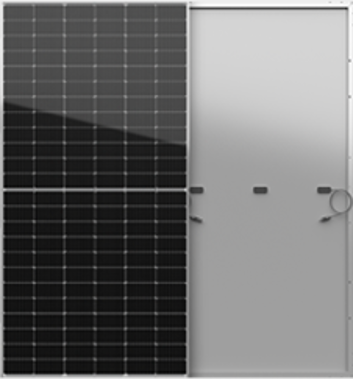
S5 Series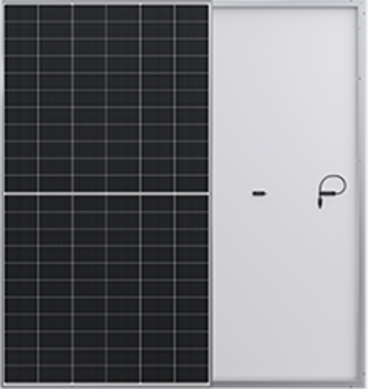
Seraphim’s Warranty Lacks Support for Australian Customers
The performance warranty for solar panels guarantees a maximum rate at which the solar panel will degrade over time. For the PERC mono Series of Seraphim’s solar panels, you can expect a 2% loss of power in the first year and 0.55% each year thereafter as per their 25-year performance warranty. For the PERC mono dual-glass panels, Seraphim offers a 30-year performance warranty with a 0.45% each year power loss.
The main issues with Seraphim’s warranty come down to the claim process. The Australian contact information provided is for an individual with a residential address and a phone number that is not in a valid Australian format. This does not look good for customers seeking warranty.
Pros and Cons of Seraphim Solar Panels
- Bloomberg tier 1 listed company emphasising they have financial stability
- No premium options – panels are mostly focused on the low cost mass market
- Shorter company history compared with some of the other Chinese solar panel manufacturers
- No Australian office and local support for warranties is completed by the importer
Seraphim Solar Panel Specifications
Should I Buy Seraphim Solar Panels?
Feel free to contact Solar Choice for some impartial expert advice on your quote.
Seraphim Commercial Solar Project
An example of a Seraphim commercial project is the system that was installed for the lighting retailer Beacon in June of 2016. The system consisted of 384 SRP-260-6PB modules, totalling a system capacity of 100kW. The system installed in Melbourne took the team of 9 technicians 2 weeks to fully install and connect to the grid. With estimated electricity production of 130 thousand kW/h annually, it will significantly reduce Beacon’s energy consumption costs. The project also included the installation of a Tesla electric car charger. The innovative drive of Seraphim was on display, as illustrated through the installed panel array for Beacon. (pictured below)
Since 2008 our knowledge and sophisticated software has allowed over 300,000 Australian households and businesses to make a well-informed choice on their solar & battery installer.
- Solar Panel Costs: Solar Choice Price Index | April 2025 - 1 April, 2025
- Solar Panels For Homes – All You Need to Know About Solar Systems - 18 March, 2025
- Best NSW Solar Feed-In Tariffs - 17 March, 2025
Reviews from Australians who have installed Seraphim Panels
Solar panel installation was done terribly.
Review left 3 years after system installed
The panels look good, and with 10 on the east side and 11 on the west side we get a flatter curve for a longer period of the day. The 21 X 370W panels (7.7kW) matched with a 6kW Growatt 6000 TL-X inverter set up to satisfy the 5kW export limit. After self-consumption, we usually export twice as much as we import. Adding an EV recently means we can usually charge it from solar so it is costing us about $2/100km to run the car!
Review left 7 years after system installed
System out put great until it started decreasing significantly within 3.5 years. SAE claimed there were no issues however eventually checked the system in October 202 and replaced entire system in February 2021 at no cost to ourselves. Current panels are operating as expected and lot more reliable than former panels.
Efficient installation, happy with excellent backup service . Very happy with fortune Solar installing solar at very competitive rate.
Review left 4 years after system installed
The system is working very well with no problems with the installation. Our only concern is the falling feed in tariff and increased electricity charges that has resulted in an overall increase in our power bills, (e.g. we exported 348Kwh and used only 148Kwh, but still had to pay charges of over $40.00.
Review left 5 years after system installed
The Seraphim panels, whilst perhaps not so well known have, to date, performed faultlessly and while maximum power production was just over 102 kilowatt hours in January 2019 it is still over 100 kilowatt hours in December 2023 indicating minimal degradation.
Review left 3 years after system installed
Working well as reflected in our electricity bill. No problems as far as we know.
Review left 3 years after system installed
The solar panels, being a recent product, have a broader angle of energy collection than the earlier panels we had. No problems have been encountered
They do as they should. It's a shame SunBoost isn't as reliable
Review left 6 years after system installed
3 panels had to be replaced after one year and then the entire system (22 panels) had to be replaced in January 2021.
Working fine so far, but still early days
These seem to work fine, but I was quoted a more efficient cell, but delivered an older style.
Can't comment as only had it < 2 months. Waiting for bill to see benefits.
Look good on the roof, good brand
Professional services received!
So far so good.
No comments
Still going strong
Look OK. No issues so far
Each panel is independent
